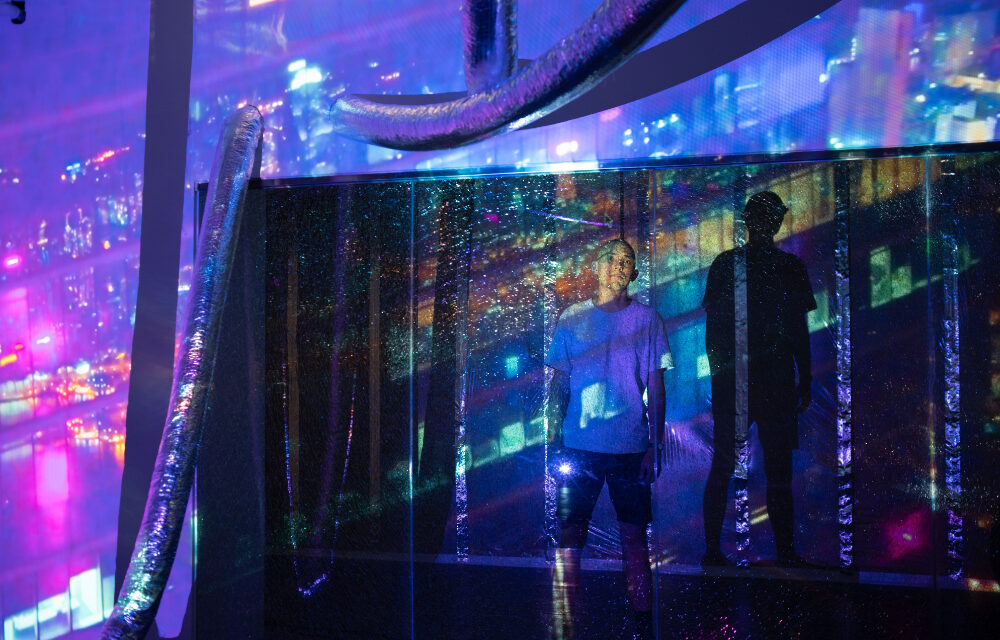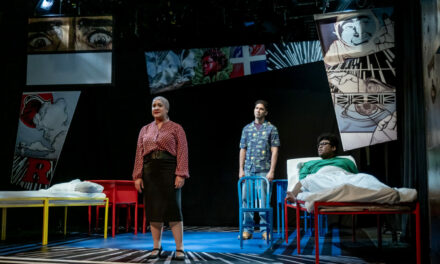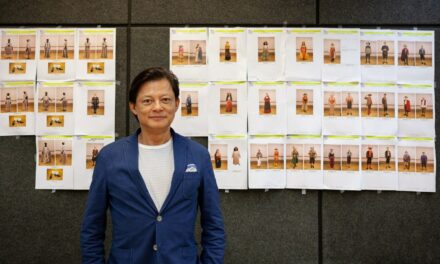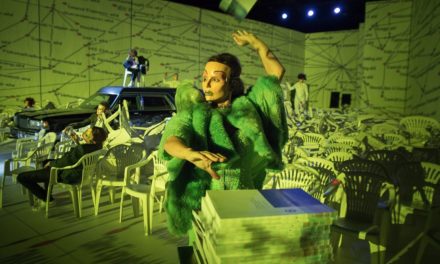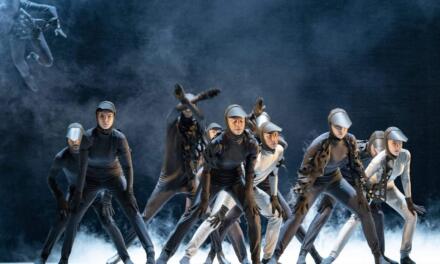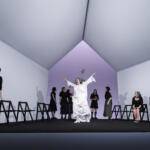When you step into Wheezing, Mark Chung’s new show at de Sarthe Gallery, the first thing you encounter is a hazy photograph of Hong Kong Island. Then a sign points to the right, where two rows of PVC curtain—like the ones found in meat storage or industrial printing units—usher you into a small glass-panelled room. You detect a slight drop in temperature, but you’re too distracted by the mirage of light bouncing on the glass around you to whip out the cardigan in your bag.
On the opposite end of this room is another set of PVC curtains, which you must pass through to enter the last space. Here, the temperature is significantly hotter. Has somebody turned off the air-conditioning, you wonder as you step over and around the forest of pipes that appear to spring forth from the air-conditioning units above. Turns out they’re redirecting air from this larger space to the smaller glass-panelled space. Poking in and out of the gallery floorboards, and making loops on the exposed ceiling beams, they look like a lumbering amorphous creature staking its claim on the space.
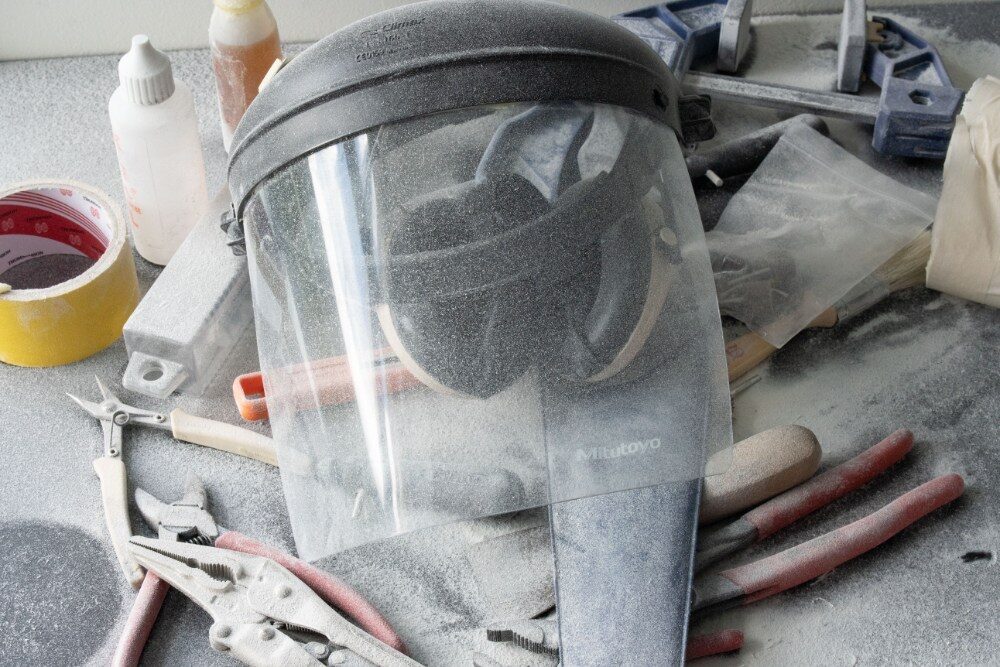
Mark Chung’s Wheezing at de Sarthe. Photo by William Furniss.
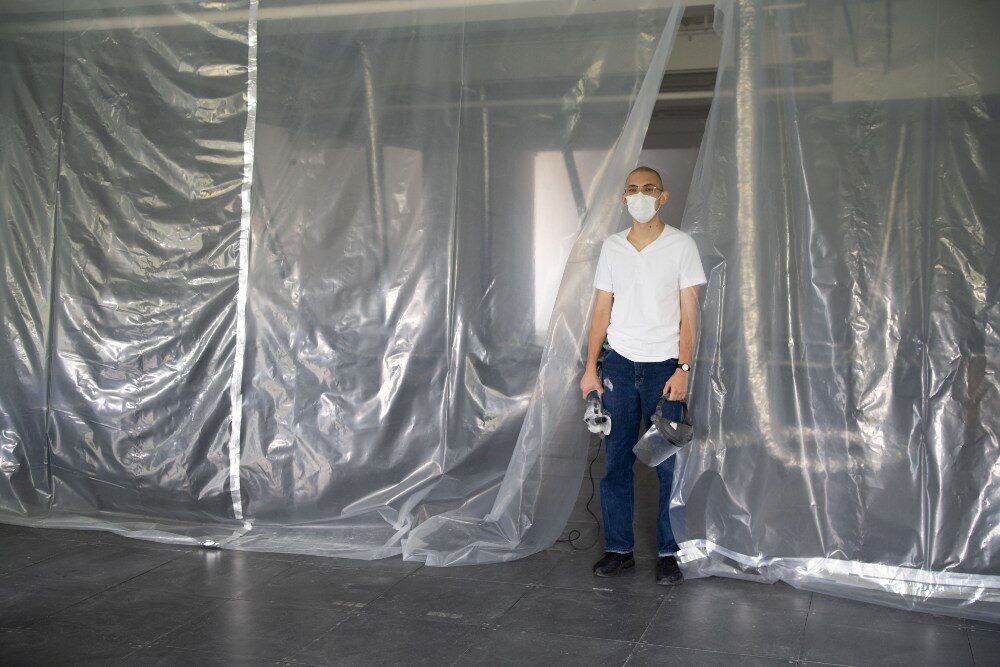
Mark Chung’s Wheezing at de Sarthe. Photo by William Furniss.
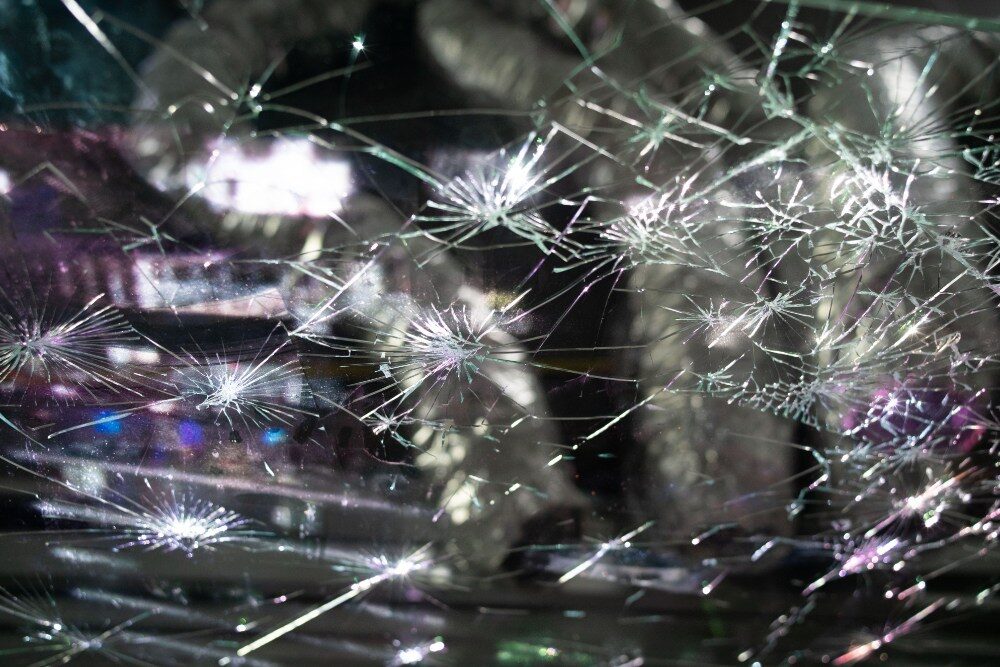
Mark Chung’s Wheezing at de Sarthe. Photo by William Furniss.
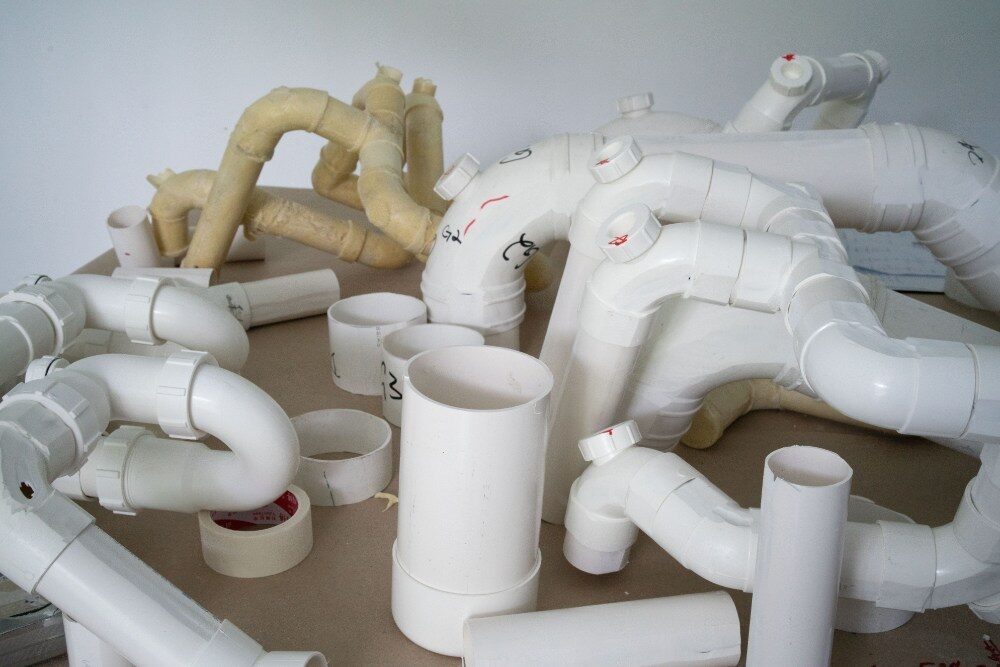
Mark Chung’s Wheezing at de Sarthe. Photo by William Furniss.
Amorphous creatures are of course a common sci-fi troupe. And yet Chung says he isn’t a sci-fi fan. Instead, he says as he leads us on an early August tour of de Sarthe, where he spent two months developing Wheezing as part of a residency at the gallery, the show was inspired by Hong Kong itself.
Chung draws a parallel between the redirecting of air flows within the gallery to the disruption of the flow of the cityscape by the protests that have been ongoing since last June. It’s only when the flow gets disrupted do we become hyper aware of the different elements that make up the quotidian – be it of a gallery space or a city, says Chung.
One is tempted to situate the show in the context of the current pandemic, especially given its title. “All the works in the show are medical conditions or body symptoms that indicate dysfunction of the body, body as a system, basically small things that point to an irreversible systemic failure,” notes Chung in his artist’s statement. But the show resists explicit readings and is instead more interested in probing the physical and psychological manifestation of this sickness or displacement.
His original idea for the exhibition was different from the current iteration. It was “much more expressive,” says de Sarthe director Willem Molesworth, with punches through walls, an overturned reception desk and wailing sirens at the entrance. “I submitted the proposal [last year], so it was about the feelings I had back then,” says Chung. “The [political] situation was really bad. I wanted to create an immersive installation [about] how we’re already living in an apocalyptic landscape.”
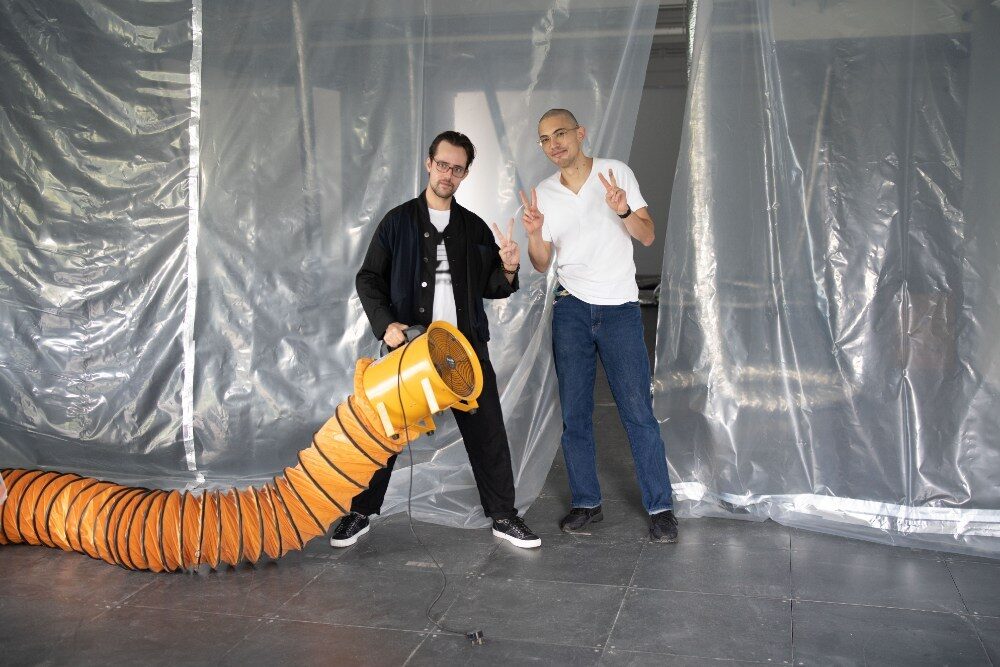
Willem Molesworth and Mark Chung, day 10. Photo from the original article.
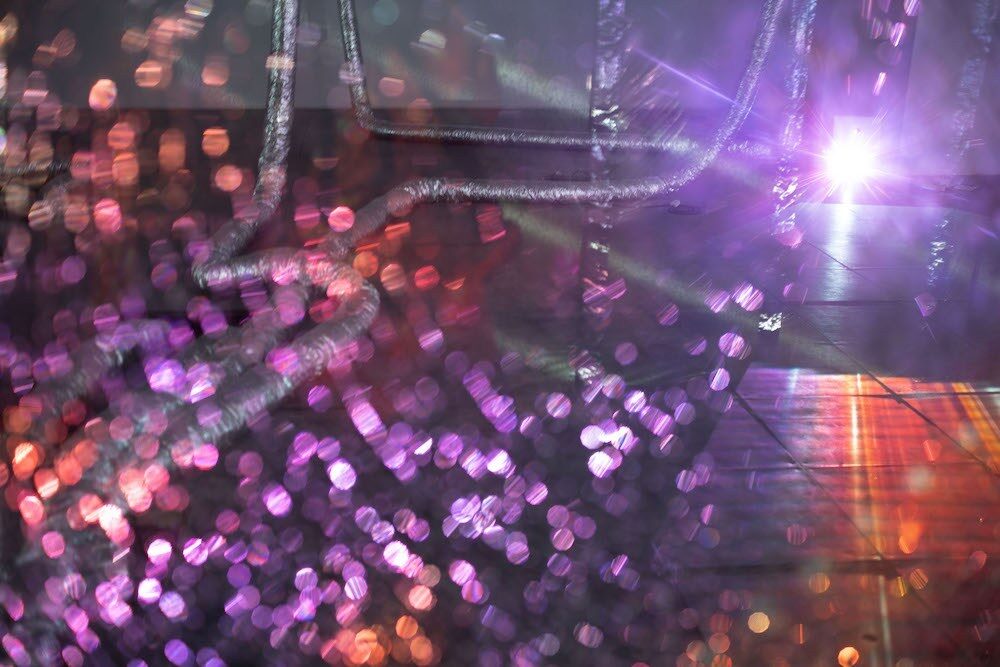
Mark Chung’s Wheezing at de Sarthe. Photo by William Furniss.
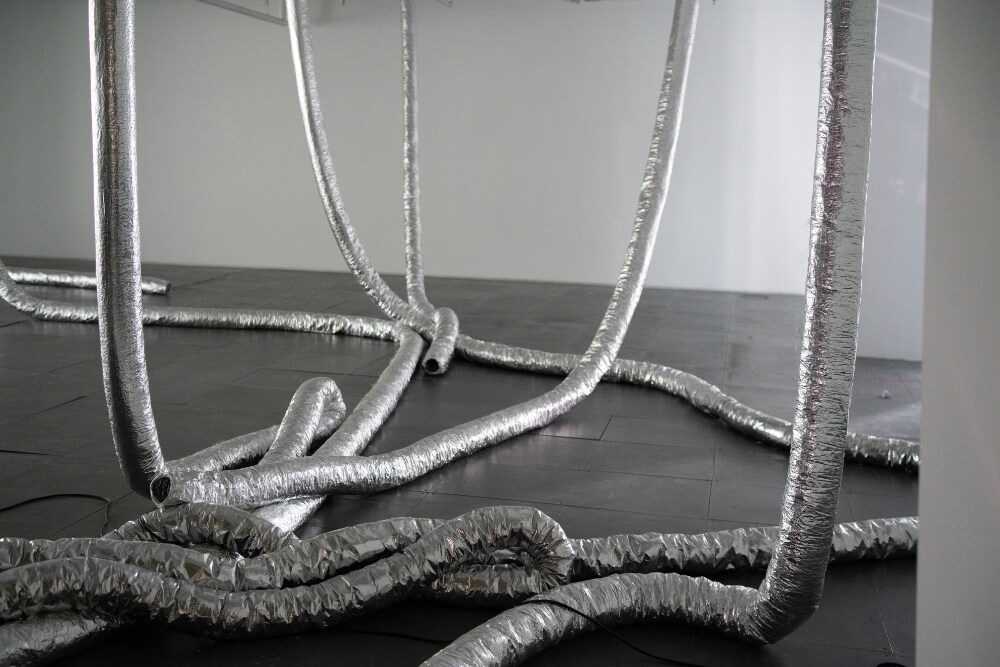
Mark Chung’s Wheezing at de Sarthe. Photo by William Furniss.
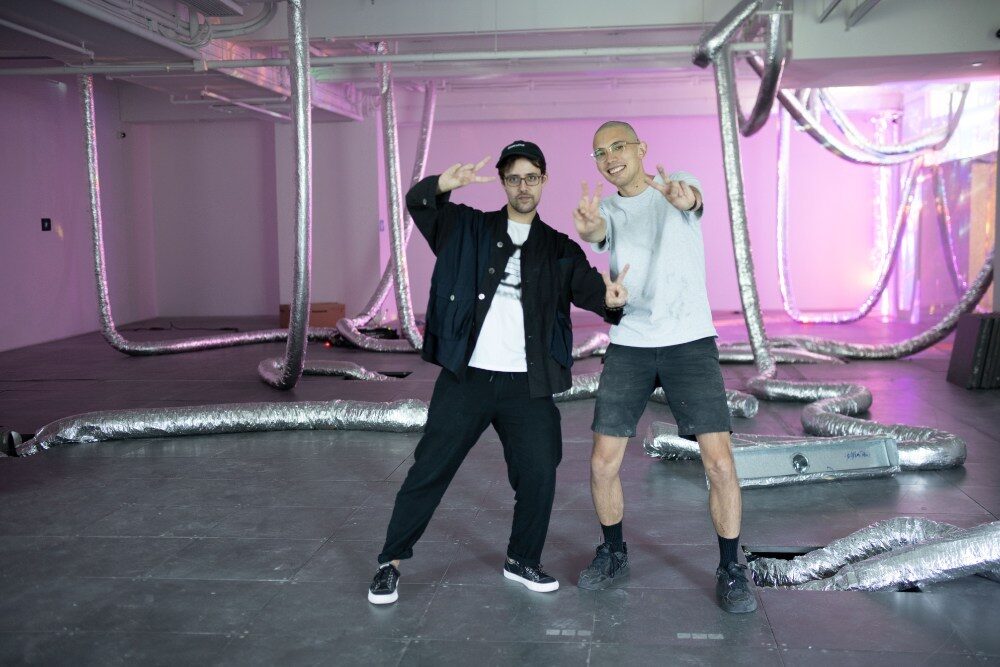
Willem Molesworth and Mark Chung, day 10. Photo from the original article.
While the final result may be less shocking than that initial idea, it is no less compelling. And for Chung, it provides a way to navigate the complicated feelings that have risen within him over the past year. The exhibition is the culmination of a summertime residency that offers Hong Kong-based artists a chance to use the gallery as a platform for their ideas. Wandering through the cluttered space, Chung points out how he has been experimenting with various artistic methods, seeing how different materials come together and morph into rich sensorial experiences. He says the process has been a constant quarrel between him and the materials.
“At the beginning of the residency, I really freaked out, as I was working with elements that cannot be controlled—humidity, air, lighting—but I’m attempting to control them,” he says. In one failed experiment, he attempted to smash the glass panel ringing the smaller room. “The first time, I smashed the glass with a hammer, but I should have used a punch,” he says. “I’ve never done it before, so it’s watch and learn. You need to control how it breaks but at the same time, break it enough so that it can properly refract light.”
If the redirected air is symbolic of all the things that have changed in the past 13 months, since the protests kicked off in June 2019, then the mirage of light dancing on the glass, the walls and aluminum ducts is a symbol of what has remained constant. “Our experience of the city has changed completely,” says Chung. “You don’t feel the same way going into the MTR or on buses – what used to be safe modes of transport. The only thing that hasn’t changed is the 8 pm [Symphony of Lights] show.” Every night, Hong Kong’s skyline lights up in sequence with a soundtrack that is blasted out over the Tsim Sha Tsui and Wan Chai promenades – spaces that are normally filled with tourists, but which have emptied out since the protests and pandemic began. “They stopped it for like two days, but otherwise, it’s there, day in and day out,” says Chung.
To gather footage of the show, Chung flew a drone up the side of Hong Kong’s tallest building, the ICC, to capture the reflection of the light show on the glass-clad tower. The filming process was a tug of war with the natural elements. It was hard to stabilize the drone as it travelled up the building’s 483-meter mass, which is buffeted by strong gusts of wind near the top. “‘The fact that the drone is moving, and the light show is moving, made editing the footage challenging,” he says. “I’ve been trying to stabilize both elements for two whole days.” His goal—and his challenge—is to create a seamless perpetual loop, dazzling yet empty.
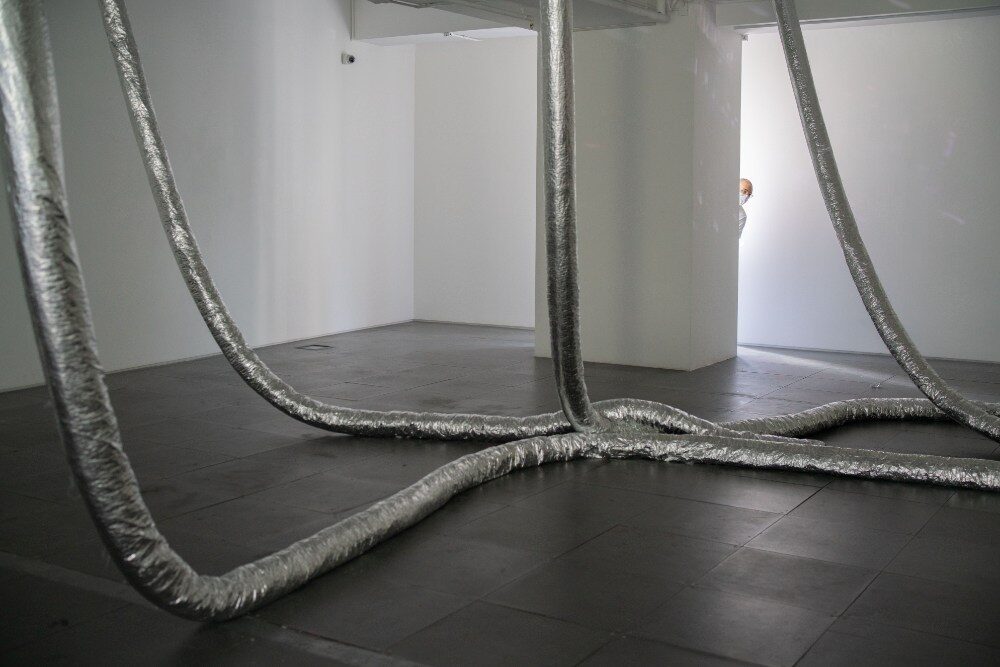
Mark Chung’s Wheezing at de Sarthe. Photo by William Furniss.
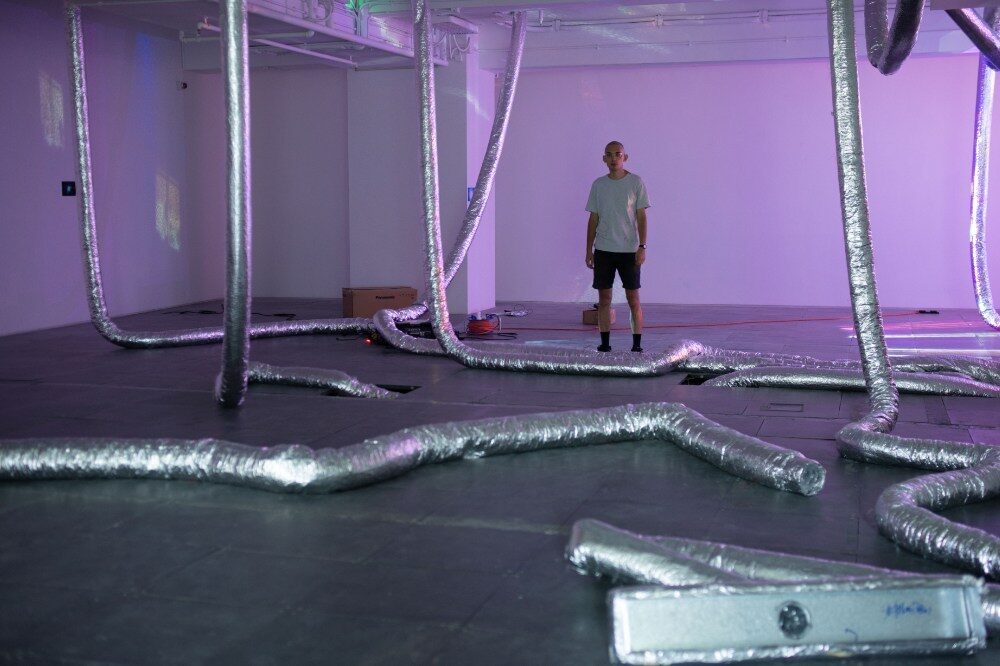
Mark Chung’s Wheezing at de Sarthe. Photo by William Furniss.
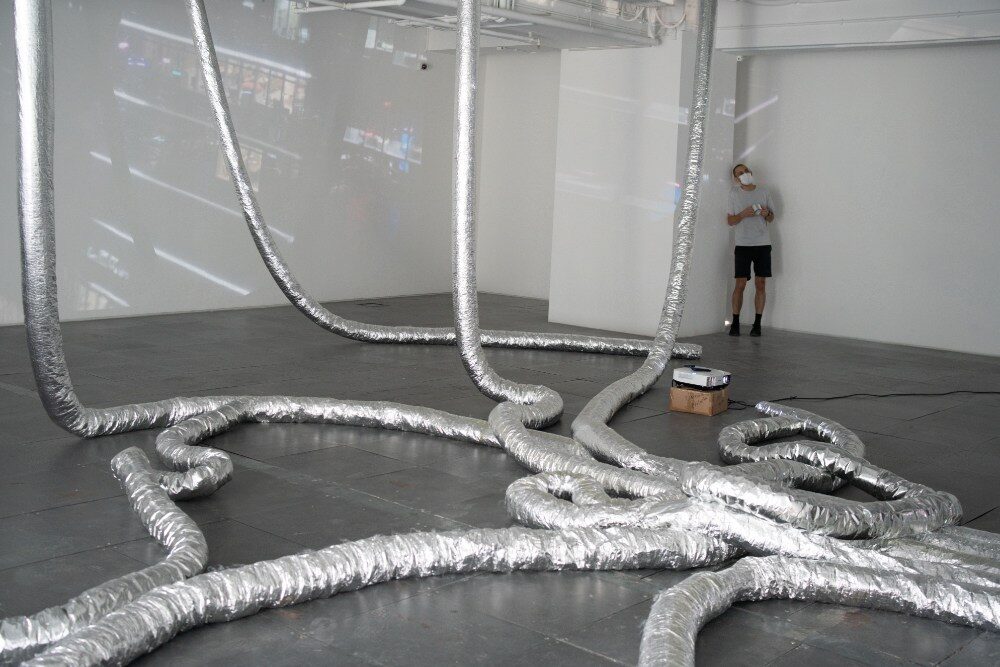
Mark Chung’s Wheezing at de Sarthe. Photo by William Furniss.
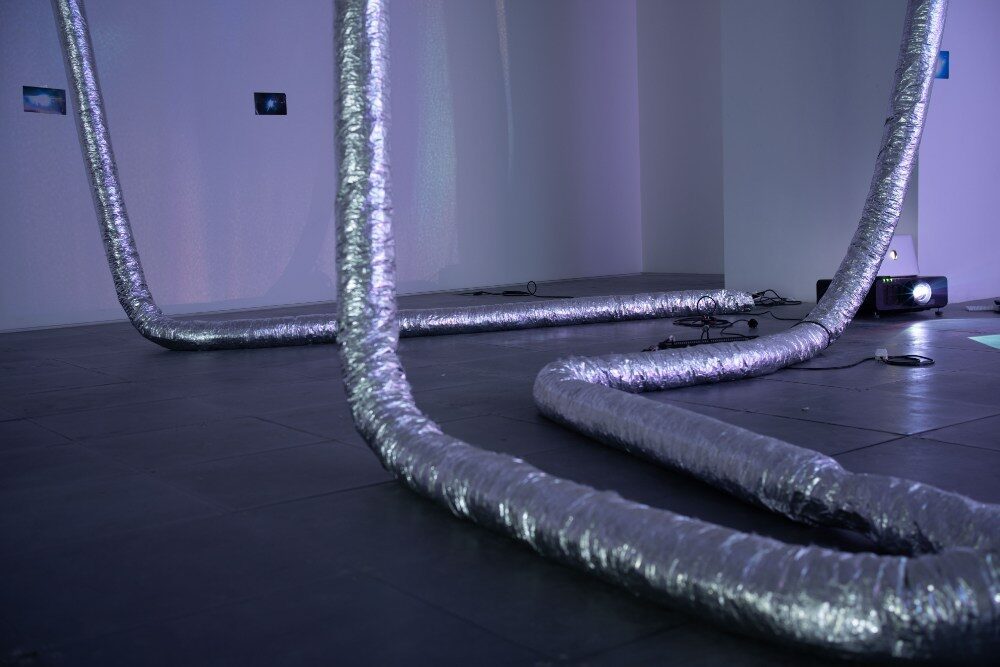
Mark Chung’s Wheezing at de Sarthe. Photo by William Furniss.
It’s not the first time the artist has explored the idea of state-sanctioned celebration. An early example was “Fireworks,” a video art piece that projected different firework displays installed on the ceiling of a gallery. Visitors needed to crane their necks to look at the sizzling bursts of light. “Nobody in Hong Kong has seen fireworks like that. You only get that kind of proximity if you light your own fireworks,” says Chung. “All the fireworks in Hong Kong are controlled by the government – they’re always displayed at least 500 meters away and in the middle of the harbor. It’s a very remote experience, you don’t see, hear or smell it, really. It’s very controlled.”
That particular work was created in the aftermath of the 2014 Umbrella Movement, when the annual October 1 fireworks display was suspended. “I was overwhelmed with a feeling of helplessness and powerlessness. The only thing we seemed to have achieved was the cancellation of the fireworks.”
Chung returned to the duality of state-sanctioned celebration and oppression in “Sweet Light” and “Crippling Light,” two works shown at Tai Kwun as part of Very Natural Actions last autumn. While the former’s flickering lights are reminiscent of neon signs in the older parts of town, the latter’s orange-red burst of cloud is a reminder of the tear gas fired at protest sites last year.
It touches on something very close to his heart. Born in New Zealand, Chung moved to Hong Kong at the age of four. His father is a fourth generation Hongkonger, and the artist switches between Cantonese and English in conversation. For him, the city is his only home. “People talk about leaving the city. They say, ‘It’s easy for you to leave. Why don’t you?’ My simple answer is, how could I leave? Everything I know is here. People think that the city will be finished, but it hasn’t, it’s still here.”
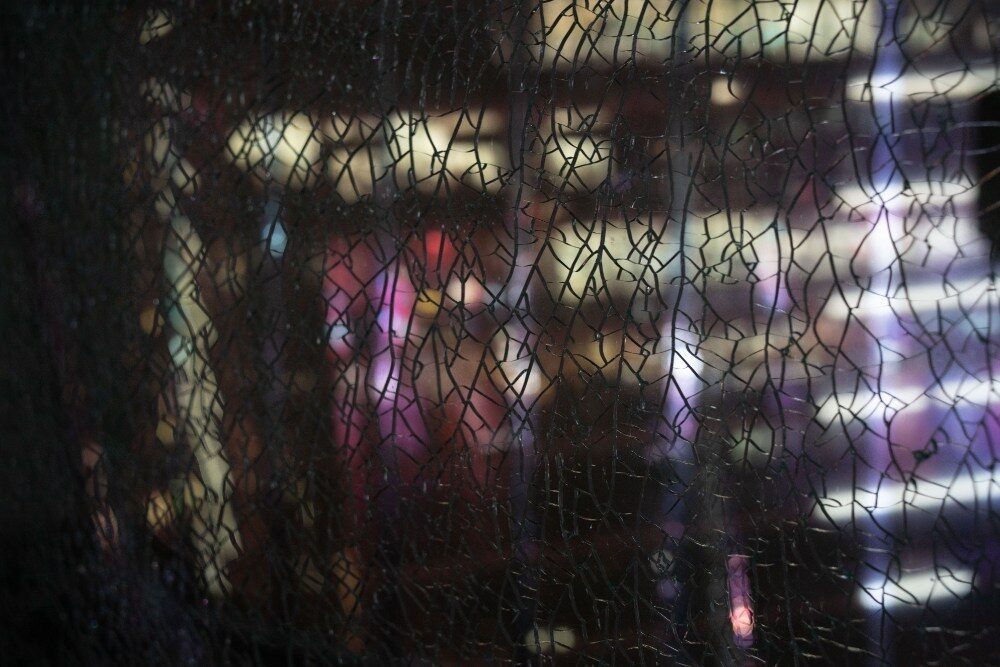
Mark Chung’s Wheezing at de Sarthe. Photo by William Furniss.
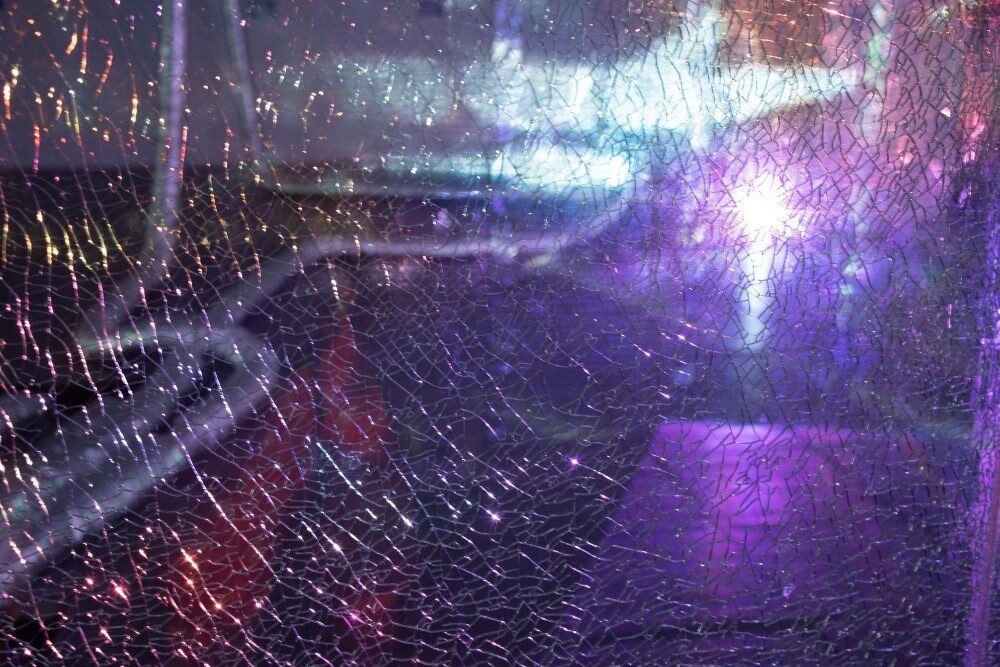
Mark Chung’s Wheezing at de Sarthe. Photo by William Furniss.
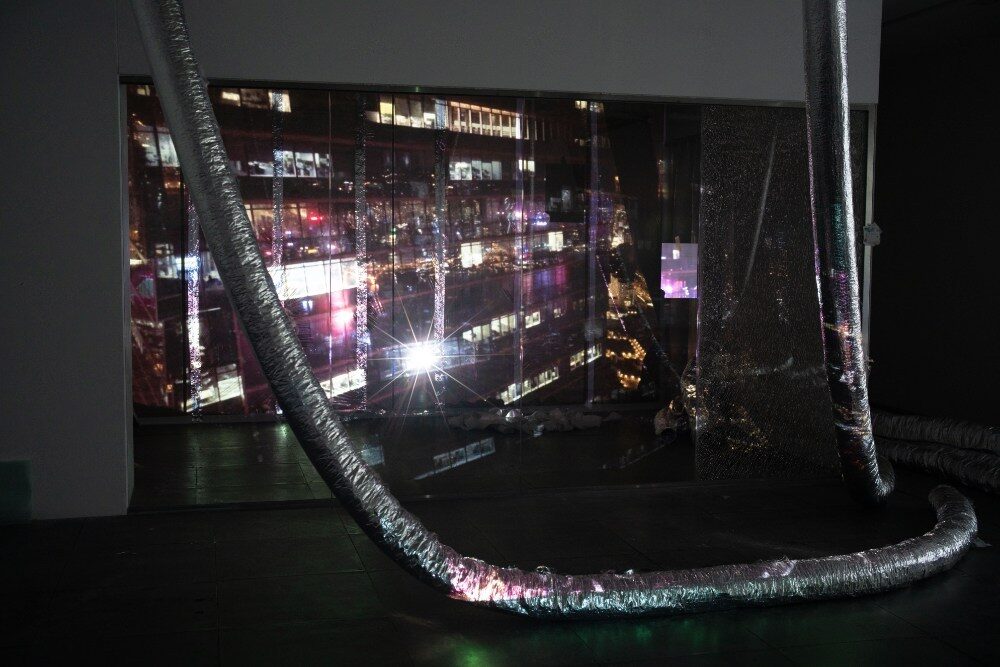
Mark Chung’s Wheezing at de Sarthe. Photo by William Furniss.
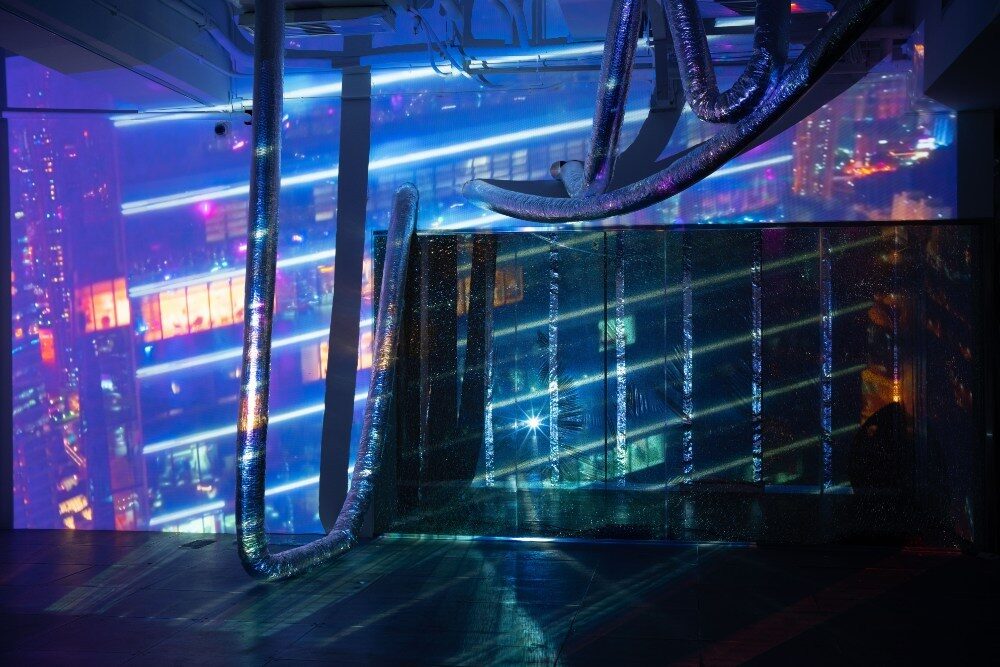
Mark Chung’s Wheezing at de Sarthe. Photo by William Furniss.
That’s something felt everywhere in Chung’s residency. At the back of the gallery, he has set up a workstation of sorts. A pile of entangled rubber pipes lies on a table; he says it is a mould. Liquid polyurethane will be poured in. The jumbled form is inspired by exposed pipes Chung sees on facades of old buildings in Tai Kok Tsui, where his studio is. “He didn’t need to pour anything into it. As a gallerist, I can sell this,” says Molesworth as he knocks lightly on the mould. “This is an interesting shape on its own. But this is also about the idea of clotting. When something is stuck, it takes the shape of the thing it is stuck in.”
Chung’s process becomes clearer with a second visit to the gallery in late August. The mould is now heavily bandaged, and the polyurethane inside, now solidified, is threatening to split it open. Parts of the mould had to be chiseled away to allow for breathing space. The whole thing looks like it has suffered some sort of traumatic blow. Just as the mould conditions the polyeutherine to take on its shape, the polyurethane is also forcing the mould to transform. It’s a moving exploration of the invisible forces that shape things, us, the city, and pain and trauma these transformations left behind.
It’s been almost a year since Chung first submitted his proposal for the residency. How does he feel about the future of the city? In his answer, he goes back to the idea of the disrupted flow. “The only way to revolt is to stop this flow,” he says. “When you think about these unseen systems, you don’t see them but they’re always there, always working. You only feel them when you alter the flows.”
Wheezing runs from September 5-19 at de Sarthe.
This article was originally written by Christie Lee for zolimacitymag.com/ and has been reposted with permission. To read the original article, click here.
This post was written by the author in their personal capacity.The opinions expressed in this article are the author’s own and do not reflect the view of The Theatre Times, their staff or collaborators.
This post was written by Zolima CityMag.
The views expressed here belong to the author and do not necessarily reflect our views and opinions.

